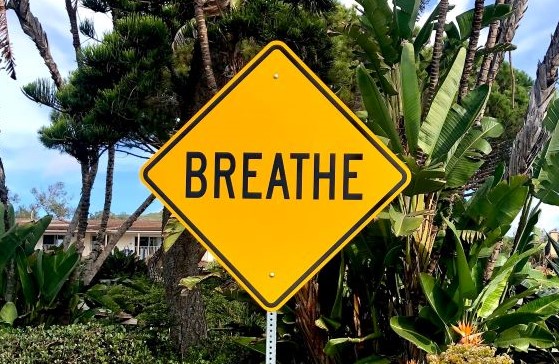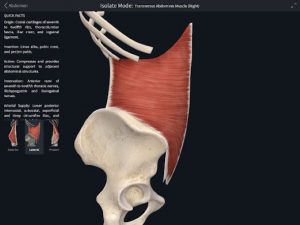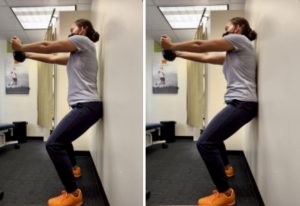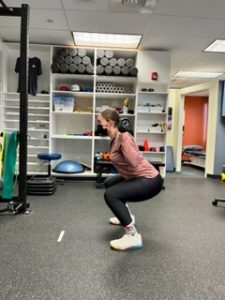
If you’re anything like me, you’ve been called a “mouth-breather” once in your life. Maybe a coach has called you out after huffing and puffing on and off the field, or someone has told you to close your mouth while you chew (yikes).
Maybe you’ve also had a hard time breathing and bracing while squatting or lifting during a heavy training session. And the next day, you’ve had the occasional “twinge” of lower back pain if you didn’t wear your weight-lifting belt.
If you have trouble breathing and bracing properly while exercising, participating in sports, or weight lifting, you are not alone!
What Causes Poor Breathing Mechanics?
Many different factors can influence the proper functioning of the respiratory system and alter your breathing mechanics.
For example, respiratory conditions like chronic obstructive pulmonary disease (COPD) or asthma can negatively impact how efficiently you breathe due to the narrowing of your airways causing difficulty exhaling all the oxygen left in your lungs.
Over time, this can change the structure of your ribcage thereby affecting the performance of your respiratory muscles and overall aerobic endurance.
If you have been diagnosed with a chronic respiratory disease and are having trouble breathing, see our blog on Physical Therapy and Chronic Respiratory Disease: Two Ways to Breathe Better.
For those of you who have difficulty breathing and bracing without a confirmed medical diagnosis, practicing “nasal-only breathing” might be right for you!
5 Benefits of Nasal Only Breathing for Exercise Performance
If you are interested in learning more about nasal only breathing after reading this section of the blog, I highly recommend reading “Breath: The New Science of a Lost Art” by James Nestor. The majority of the information below can be found in his book!
Nasal-only breathing has a multitude of benefits in terms of exercise performance:
1. It Stimulates the Nervous System
Breathing through the nose has shown to stimulate parasympathetic nervous system fibers that are situated in the lower lungs. This aids in maintaining heart rate throughout exercise to decrease spikes that may lead to increased oxygen consumption, decreased endurance, and decreased time to overall fatigue.
2. It Maintains the Body’s pH
Mouth-breathing causes an excess loss of carbon dioxide resulting in a change in our body’s natural pH levels. This can result in dizziness, lightheadedness, and even fainting if not controlled.
3. Better Breathing Means More Oxygen
Oxygen consumption can occur with both inhalation and exhalation, so exhalation through the nasal passage can help to trap more oxygen and deliver it back to the lungs, thereby increasing our overall endurance and breathing efficiency.
4. You Stay Hydrated for Longer
Mouth-breathing has been shown to increase water loss thereby resulting in decreased time to dehydration during sport performance. No matter how much water or Gatorade you drink while competing, you won’t be able to make up for the fluid loss during mouth-breathing!
5. It Helps You Exercise Better
Proper nasal breathing can improve diaphragmatic or belly breathing needed for bracing while lifting. By increasing the pressure in your abdominal cavity, this form of breathing provides a natural girdle (think of that weight-lifting belt!) by activating your transverse abdominus muscle. Your transverse abdominus helps stabilize your low back and pelvic floor.
- Transverse Abdominus (Right) Muscle | Image Courtesy of Complete Anatomy
Nasal breathing is also important in other activities, like swimming. It ensures that all the air is expelled from your lungs while your face is in the water. Once you turn your head to breathe, you are now ready to effectively and efficiently breathe in through your nose or mouth as needed.
How Physical Therapy Can Help
Proper breathing and bracing underlies everything we do in the clinic!
Clients often have pain picking up their kids, lifting a barbell, completing a Costco trip, or training for that bucket-list 5K run. All of these activities can have difficulty with breathing in common!
Physical therapists are trained in assessing issues that may affect your breathing mechanics and efficiency, including:
- The length of muscles around your rib cage
- Upper back or rib cage stiffness
- Lack of abdominal strength or strength of the muscles involved in breathing including the diaphragm
- Lack of muscle and breath coordination with exercises/activity
Proper diaphragmatic breathing is important to establish early on, and throughout the course of treatment, diaphragmatic breathing (and proper bracing when applicable) is further challenged with the prescription of exercises specific to your individual needs.
Practice Nasal Only Breathing
Below are just a few examples of exercises that can improve breathing mechanics and efficiency during lifting and carrying activities.
If you are finding these exercises difficult or painful to perform, stop and reach out to JACO to get 1-on-1 guidance in the clinic.
Diaphragmatic Breath and Abdominal Bracing Under Load
1. Grab a kettlebell or dumbbell.
- If you don’t have weights at home, a backpack filled with books or a gallon of water will do.
2. Hold the weight out in front of you with a soft bend in your knees.
- If keeping your arms out is too challenging to start, then hold the weight close to your chest.
3. Work on gently tucking your ribcage over your belly button
- Keep a proud chest with no hunching or rounding your shoulders.
4. Fill your belly with air and then focus on gently pulling your belly button to your spine.
- This exercise engages a muscle called your transversus abdominis which acts as a girdle to stabilize your spine and abdomen, just like a girdle or weight-lifting belt would.
- Thinking about slowly blowing out birthday candles can help if you’re having difficulty with this step!
5. Perform several rounds of breathing into/out of your belly.
- The goal is to prolong your exhale to twice as long as your inhale while maintaining proper positioning.
If this is too difficult, return to diaphragmatic breath practice with abdominal bracing found in our other article.
Abdominal Bracing While Lifting
If you’re a pretty experienced athlete or lifter, or if you feel ready to take on a heavier load, you can advance to functional lifts.
Apply the bracing technique while squatting, deadlifting, overhead pressing, or performing functional carries.
The goal is the same as the first exercise, which is to stabilize your abdomen and spine:
1. Ensure you are maintaining a proper rib cage position over your belly button and a proud chest.
2. Focus on 360-degree breathing, or filling your belly up with air while gently contracting your abdominals.
3. Hold that breath for the amount of time it takes to move the load.
4. Exhale as you pull, stand, or press.
SQUAT EXAMPLE: Hold a diaphragmatic breath while contracting your abdominals for the amount of time it takes to descend to the bottom position and then exhale as you stand back up to the starting position.
Let’s Breathe Better!
If you or someone you know is suffering from an injury and is seeking physical therapy services, we would be happy to help!
Please call JACO Rehab at (808) 381 – 8947 to schedule an appointment with us. Mahalo!
Citations
1. Nestor, J. (2021). Breath: The new science of a lost art. Penguin Life.
Written by Jenn Lewis, DPT


